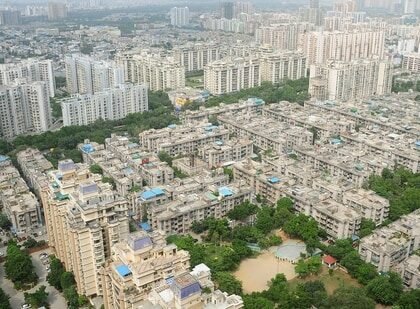Despite global headwinds such as tariffs, geopolitical tensions, and layoffs in the IT/ITeS sectors, office space demand in India’s major cities remains robust. According to a report by ANAROCK, office space absorption across the top seven cities surpassed 42 million sq. ft. in the first nine months of 2025, reflecting a 34% year-on-year increase. The growth, primarily driven by Global Capability Centres (GCCs) and tech-oriented occupiers, was also 30% higher than pre-pandemic 2019 levels.
Bengaluru led with 9.95 million sq. ft. of absorption, followed by Delhi-NCR (8.2 million sq. ft.) and the Mumbai Metropolitan Region (6.6 million sq. ft.), it said.
The IT/ITeS sector continued to lead office space demand, accounting for 27% of total leasing, followed by coworking spaces at 23% and the BFSI sector at 18%. Compared to the same period last year, IT/ITeS saw a slight drop of 1%, the data showed,
“GCCs have emerged as a key demand driver, accounting for over 40% of gross leasing activity so far in 2025,” said Anuj Puri, chairman of ANAROCK Group. “Bengaluru, Pune, and Chennai continue to dominate this segment, benefiting from talent depth and strong infrastructure.”
Also Read: Over 10.8 mn sq ft office space pre-committed by corporates during Oct-March 2025: Anarock
New office completions
Meanwhile, new office completions across the top seven cities rose 15% year-on-year, from 34.07 million sq ft in 9M 2024 to 39.21 million sq ft in 9M 2025. Pune recorded the sharpest increase at 168%, reflecting strong project deliveries during the period.
In terms of total new supply, Bengaluru led with 10.41 million sq ft, followed by Pune at 9.2 million sq ft. In contrast, Hyderabad and the Mumbai Metropolitan Region (MMR) were the only cities to register declines in new office completions, down 39% and 41%, respectively.
The IT/ITeS sector continued to lead office space demand, accounting for 27% of total leasing, followed by coworking spaces at 23% and the BFSI sector at 18%. Compared to the same period last year, IT/ITeS saw a slight decline of 1%, while coworking gained 2%, rising from 21% in 2024 to 23% in 2025, indicating that flexible workspaces are becoming increasingly popular among occupiers.
“Corporates are increasingly seeking sustainable, high-quality office spaces that support flexible and hybrid working models,” Puri said, noting that strong economic growth and India’s deep talent pool will continue to fuel the office demand cycle.
Also Read: India’s office leasing up 40% in H1 2025, Bengaluru reports highest leasing
Office vacancy trends across major cities
Vacancy levels across India’s top seven office markets continued to tighten in 2025, reflecting steady occupier demand despite a surge in new supply. Chennai recorded the lowest vacancy rate at 8.9%, followed by Pune (11.3%) and Hyderabad (13.2%).
Bengaluru stood at 15.8%, while Delhi-NCR and Mumbai Metropolitan Region (MMR) reported 17.6% and 18.4%, respectively. Kolkata, traditionally a smaller office market, had the highest vacancy at 23.5%. Overall, the pan-India average vacancy declined to 16.2%, indicating a healthy balance between new completions and absorption.





